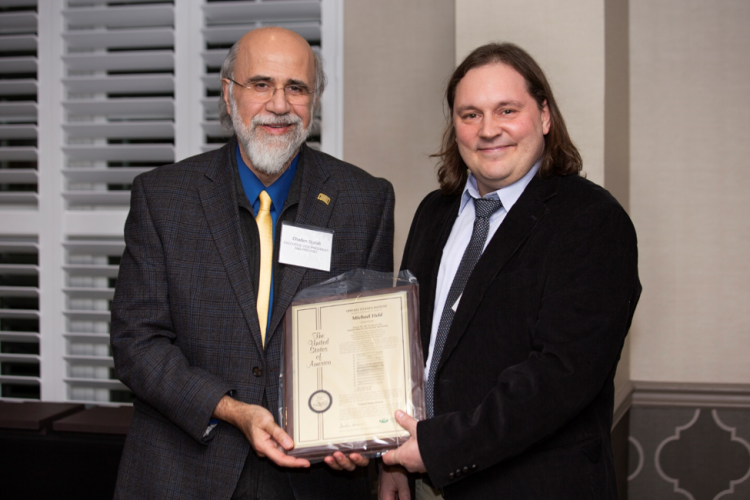
University recognizes 2019 faculty, staff and student inventors

Ohio University honored faculty, staff and student inventors during an awards ceremony Feb. 26. The Inventors Dinner recognized individuals who engaged with the university’s Technology Transfer Office over the past year to commercialize their research findings, by protecting their intellectual property through the patent process.
Ohio University has a successful track record in commercializing technologies. The institution has a portfolio of 102 active issued U.S. patents and 158 active issued non-U.S. patents. Ohio University received more than $110 million in royalty income from research licenses between fiscal year 2004 and 2020 to date.
Ohio University received the following U.S. patents for inventions in 2019:
- Michael Held, Chemistry and Biochemistry, “Digestibility of Plant Biomass”
The inventor, along with co-inventors at Michigan State University, developed a method to genetically modify plants for increased biomass and improved digestibility. The biomass from these modified plants may be used to more efficiently produce renewable energy sources, such as biofuels.

- Howard Dewald, Chemistry and Biochemistry, “Online Monitoring of Fuel Cell Reactions by Desorption Electrospray Mass Spectrometry”
This patent describes a mass spectrometry-based method for detecting fuel cell reaction products in near real-time. This ability for constant monitoring allows operators to keep the fuel cell operating at peak efficiency.
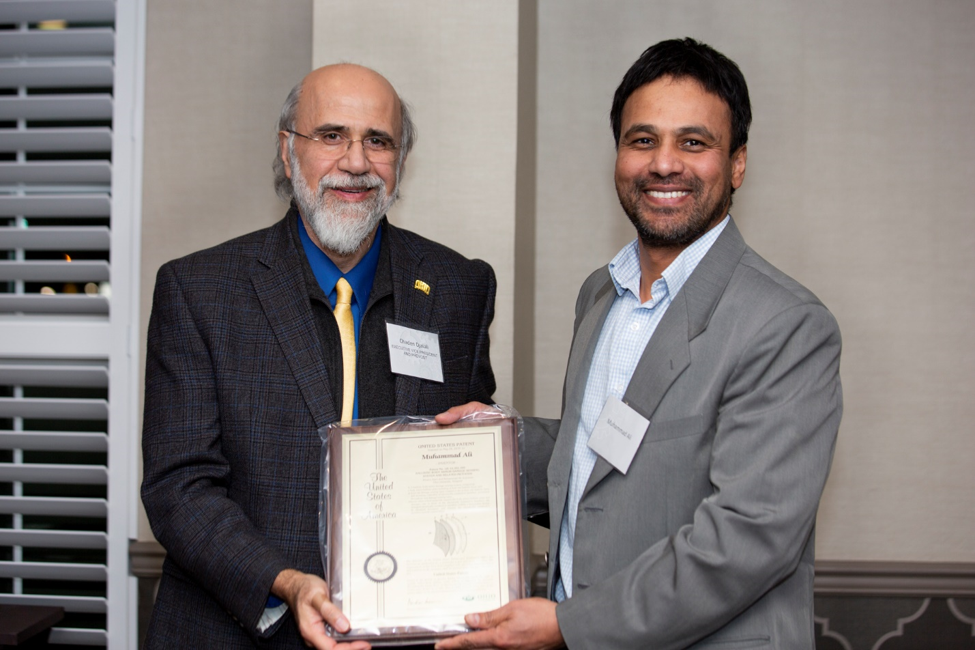
- Muhammad Ali and Khairul Alum, Mechanical Engineering, “Ballistic Body Armor Damage Sensing Systems and Related Methods”
Ballistic body armor does not always effectively prevent projectile penetration. The inventors designed a conductive layer to be attached to the underside of a ballistic plate to sense penetration and generate a signal to notify authorities of potential injuries.
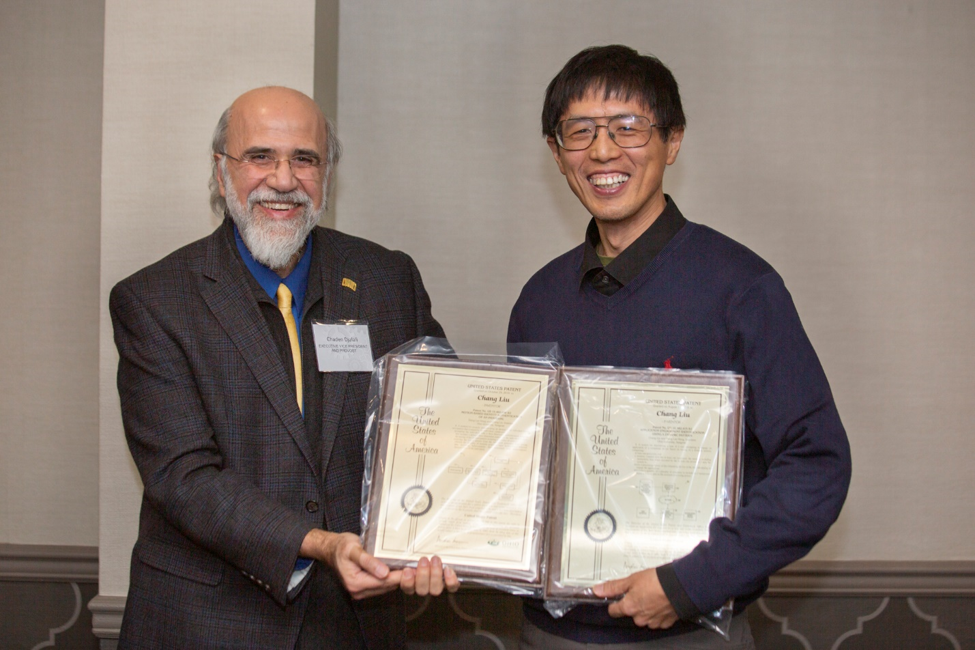
- Chang Liu, Electrical Engineering and Computer Science, “Engagement Identification Using a Dynamic Pattern”
A CAPTCHA is a challenge test to determine if a user is human. This patent describes a CAPTCHA whereby the user must trace a shape being generated within a background that is randomly changing. Detection of a pattern in a dynamic setting is difficult for a computer, but the human mind can quickly distinguish the underlying pattern.
“Motion-Based Authentication of an Individual”
The unique feature protected by this patent is the use of a motion-based authentication system in which a user traces a ‘password’ shape in a three-dimensional environment. The inventors previously patented a two-dimensional version for touchpads.
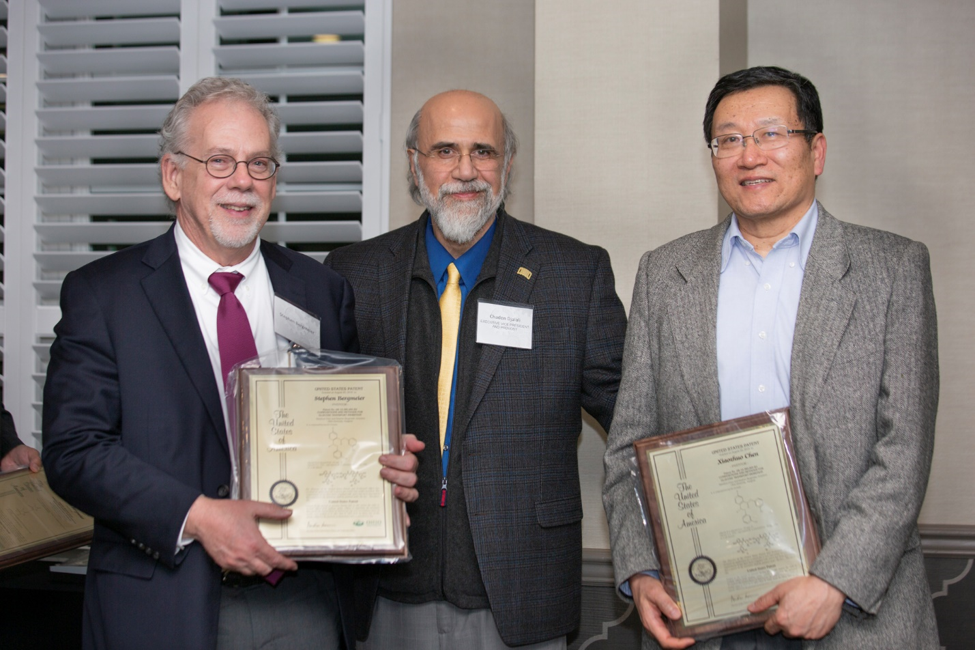
- Stephen Bergmeier, Chemistry and Biochemistry, and Xiaozhuo Chen, Edison Biotechnology Institute/Biomedical Sciences, “Compositions and Methods for Glucose Transport Inhibition”
This composition of matter patent covers novel anticancer compounds that inhibit basal glucose transport, resulting in tumor suppression and new methods for the study of glucose deprivation in cancer research.
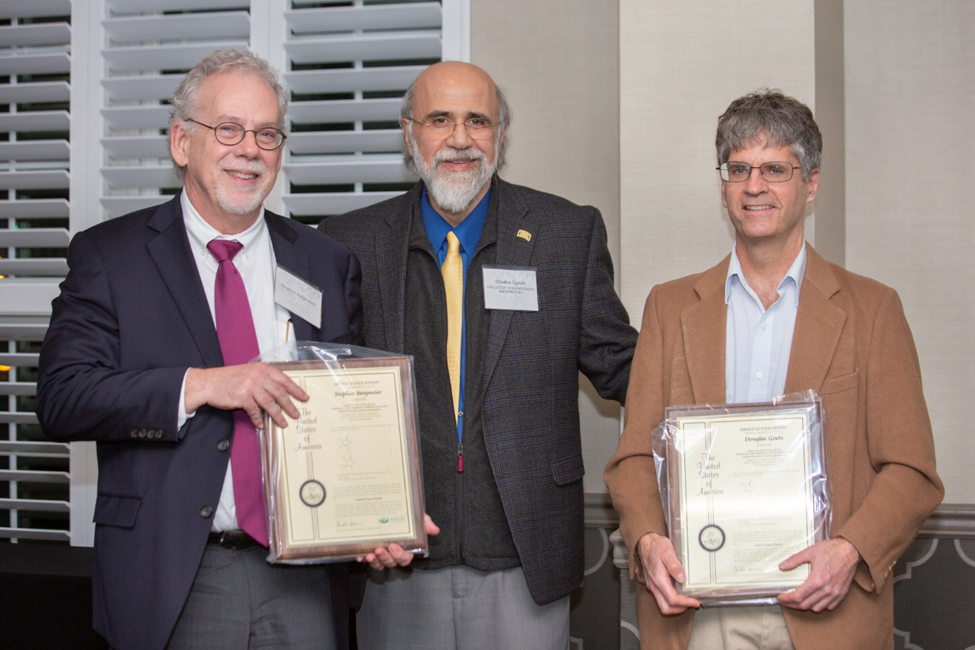
- Stephen Bergmeier and Mark McMills, Chemistry and Biochemistry, and Douglas Goetz, Chemical and Biomolecular Engineering, “Imidazole and Thiazole Compositions for Modifying Biological Signaling”
This patent covers new compounds that may be used in pharmaceutical compositions that modify various biological signaling processes or as reagents for biological assays. Among other things, these compounds may be therapeutically useful for the prevention and treatment of non-alcoholic fatty liver disease and to modify GSK-3 activity in the body.
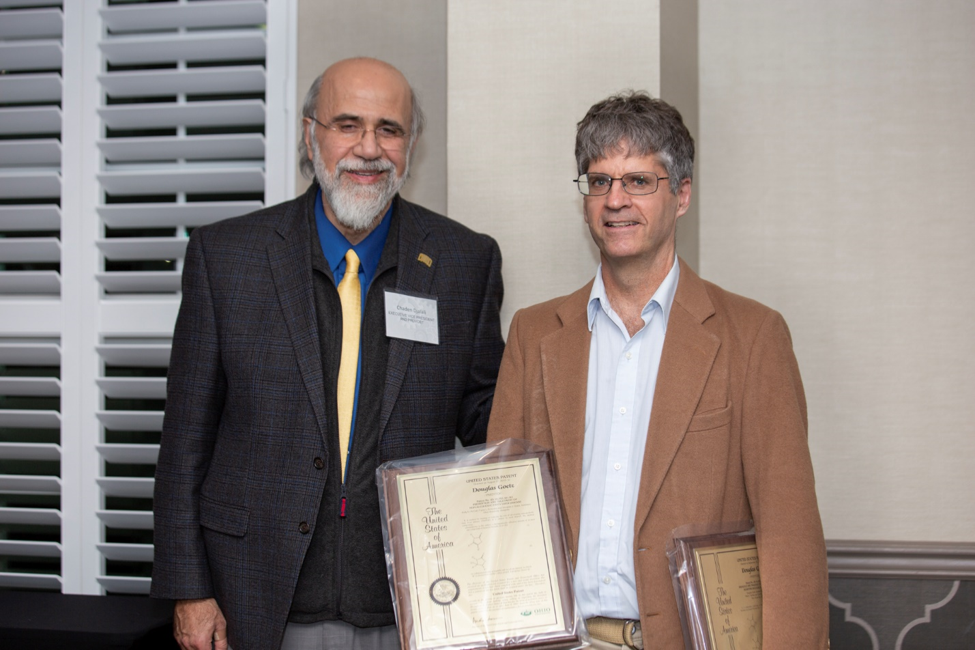
- Douglas Goetz, Chemical and Biomolecular Engineering, and Kelly McCall, Specialty Medicine, “Prevention and Treatment of Non-Alcoholic Fatty Liver Disease”
This patent utilizes novel organic compounds to treat or reduce the risk of developing non-alcoholic fatty liver disease (NAFLD).
- Lyn Bowman, Biological Sciences, “Systems and Methods for Estimating the Stiffness of a Bone Using Mechanical Response Tissue Analysis”
This patent provides methods and systems for estimating the mechanical properties of a bone. This could be utilized as a non-radiating diagnostic test for osteoporosis or other bone disorders.
- Alexander Govorov, Physics and Astronomy, “Compositions of Matter Having a Mixture of Strongly Plasmonic Nanorods and Exhibiting an Extinction Spectrum Transparency Window”
A medium is described in which a mixture of nanoparticles is designed to create a customized transparency window of a clearly defined wavelength band. For example, visible light could be allowed through the medium while all other wavelengths would be blocked.
In addition, Ohio University honored faculty, students and staff who disclosed inventions and for whom the university filed patents. Invention disclosure is the first step in the technology commercialization process. Technology Transfer Office staff review these disclosures to determine if the intellectual property can be patented and licensed for commercial use. If so, the office files for domestic and foreign patent protection as appropriate, and works with inventors to identify licensing opportunities that can develop the technologies into useful products for the marketplace.
In addition, the Technology Transfer Office works closely with the university’s high-tech business incubator, the Innovation Center, and its state-sponsored Entrepreneurial Services Provider program, TechGROWTH Ohio, to connect inventors to business coaches and sources of seed funding that can help them launch startup companies if appropriate.
For more information about the Ohio University Technology Transfer Office, visit www.ohio.edu/research/tto.
